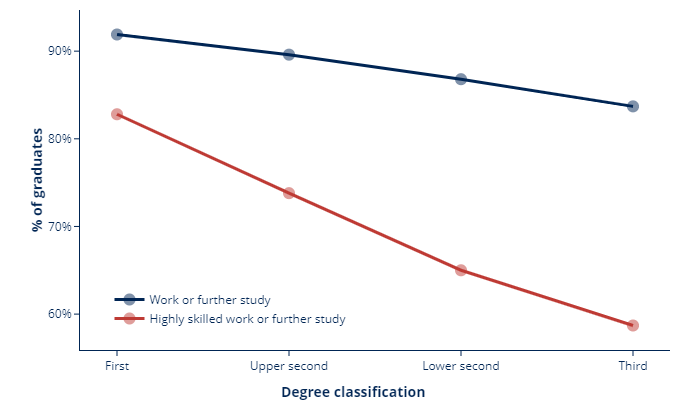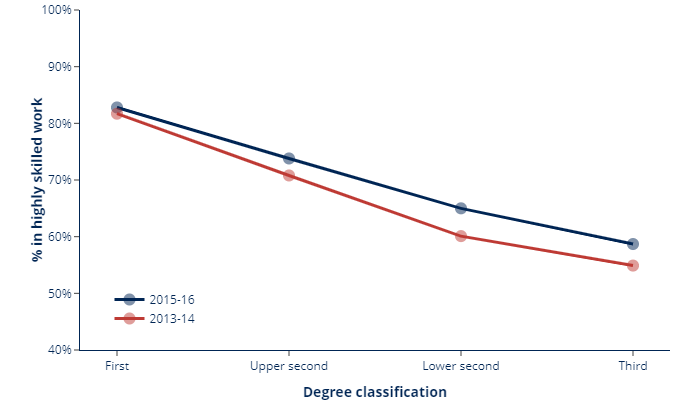Differences in student outcomes
Employment outcomes: overall results
Of the total population of graduates with known destinations, 89 per cent were in employment or further study six months after graduation. Further to this, 74 per cent were either in a highly skilled job or further study at six months after graduation.
The proportion of graduates in any type of employment or further study is eight percentage points higher among those with a first class degree than among those with a third class degree. However, the proportion of those in highly skilled employment or further study is 24 percentage points higher among those with a first than those with a third class degree.

For the period 2013-17, 71 per cent of graduates were in highly skilled employment or further study - this increase has applied to every degree classification.
The largest increase is a five percentage point increase for graduates with a lower second class degree, and the smallest is of one percentage point for first class degrees. This suggests that part of the increase in the proportion in highly skilled employment or further study is due to the increased proportion gaining a first or upper second class degree.

Describe your experience of using this website
